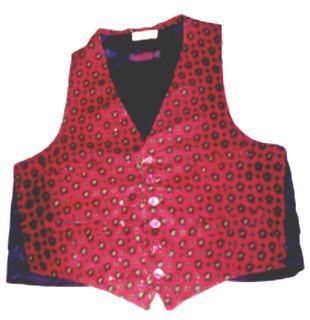Doublet
Fabric
1997
Donated by Tony Conrad
The term doublet made its first appearance in the 14th century to describe close-fitting body garments with or without sleeves worn over the shirt. Its invention coincides with the emergence of tailoring as a profession. The doublet’s close-fitting aspect, a result of the tailor’s ability to mimic the contours of the body, probably explains its name. It is ancestor to the modern day vest seen here and still called a doublet in some circles.
While books could be written about the fascinating relationship between dress and doubling, the following folktale highlights some key ideas:
A washerman had a donkey which could carry extraordinary burdens. In order to feed him the washerman took him at nightfall to other people’s corn; and the donkey enjoyed other people’s corn to his heart’s content. Nobody dared come near him and chase him away, for everyone took him for a tiger. But one day a watchman lay in wait for him. He had covered himself with a dust-grey cloak and held his bow in readiness to kill the beast of prey. When the donkey saw him from far-off, love stirred in him and he took the man for a she-donkey. So he cried out and ran to him. The watchman recognized the donkey by his voice and killed him.
